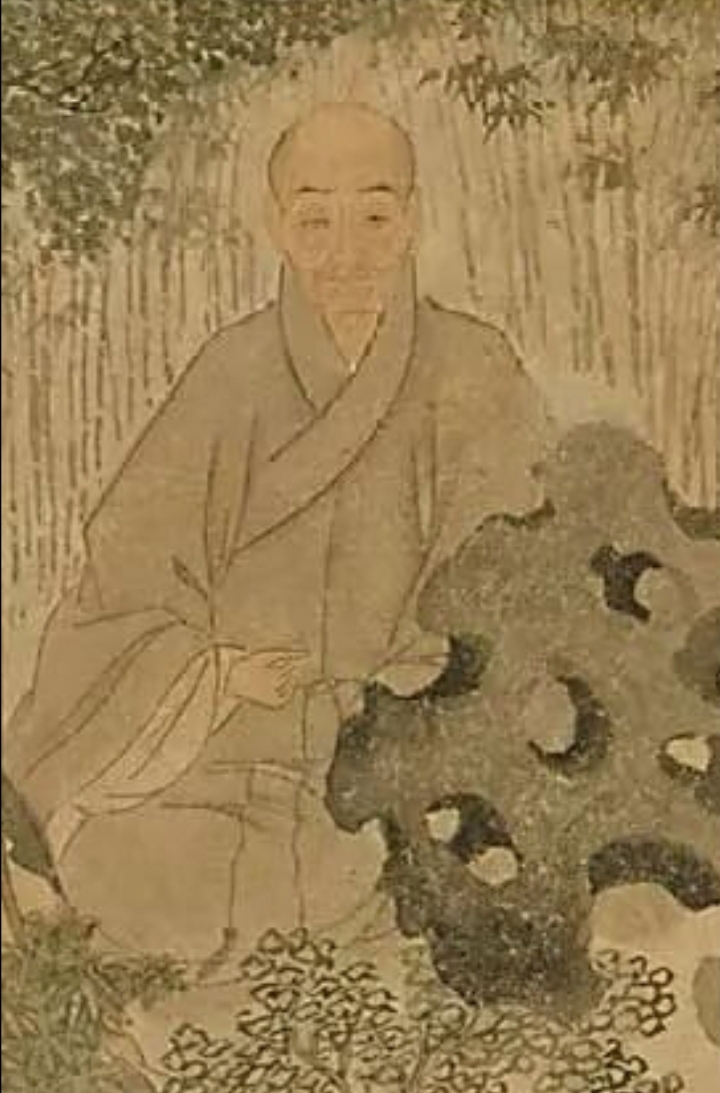Yunqi Zhuhong on:
[Wikipedia]
[Google]
[Amazon]
 Yunqi Zhuhong (; 1535–1615), also named Zhuhong, was a Chinese Buddhist leader during the
Yunqi Zhuhong (; 1535–1615), also named Zhuhong, was a Chinese Buddhist leader during the
 Yunqi Zhuhong (; 1535–1615), also named Zhuhong, was a Chinese Buddhist leader during the
Yunqi Zhuhong (; 1535–1615), also named Zhuhong, was a Chinese Buddhist leader during the Ming Dynasty
The Ming dynasty (), officially the Great Ming, was an imperial dynasty of China, ruling from 1368 to 1644 following the collapse of the Mongol-led Yuan dynasty. The Ming dynasty was the last orthodox dynasty of China ruled by the Han peo ...
. He was known as the “Master of Yunqi”, after a monastery restored in his honor. He was born in Hangzhou
Hangzhou ( or , ; , , Standard Mandarin pronunciation: ), also romanized as Hangchow, is the capital and most populous city of Zhejiang, China. It is located in the northwestern part of the province, sitting at the head of Hangzhou Bay, whic ...
into a family with the surname Shen. Zhuhong was reportedly an excellent student, although he never succeeded along the path of officialdom. His first connection to Buddhism was that of the Pure Land variety. After failure in the official examinations he became a monk at thirty-one despite the existence of his second wife, who later became a nun. Zhuhong died at the age of eighty-one. Zhuhong is remembered for his persistent opposition to Roman Catholicism, and for his analysis of the Pure Land tradition of Buddhism. Zhuhong's anti-Catholic writings are a direct rebuttal to the Jesuit Matteo Ricci (利瑪竇). Along with Yuan Hongdao, Zhuhong wrote extensively on the Pure Land and defended its tradition against other Buddhist critics, as well as analyzing the Pure Land within the larger Buddhist context.
Opposition to Catholicism
Traditional Buddhist monasticism had declined by Zhuhong's age. The English translation of ''heshang'' (和尚) as “monk” by the late Ming is perhaps inappropriate. A better rendition might be “priest” as it is often used in Japan to describe those specialist practitioners of funeral rites and memorial services. Zhuhong himself complained that “Monks are also geomancers, diviners, physiognomists, physicians, gynecologists, potion makers, spirit healers and alchemists. All of the above entail the extreme demise of Buddhism (''Sanbi'', p. 12b).” The Jesuit entry into sixteenth century China placed them in the middle of such conditions. For Zhuhong and other Buddhists the Jesuits were an additional headache to a long list of serious problems. Zhuhong's rebuttal of Catholicism was the first of a longer and ever-growing response. At the first stage of anti-Catholicism the Buddhists had a weak grasp of the religion. Zhuhong's ''Tianshuo'' (天说, Explanation of Heaven) appeared in his ''Sanbi'' collection in 1615. Matteo Ricci's monumental theological work ''Tienzhu shiyi'' (天主實義) had already appeared in 1596. Zhuhong's polemic coincided with the political appointment of Shen Que (沈隺, d. 1624) as vice minister of rites in Nanking (Nanjing) and his initiation of an anti-Catholic campaign from official circles in 1616. Zhuhong's collected essays, the ''Zhuzhuang suibi'' was written and published in three sections, the ''Chubi'' (初笔), ''Erbi'' (二笔) and the ''Sanbi'' (三笔), modeled after the classic Song period collection ''Rongzhai suibi''. Zhuhong's first collection was published in 1600 at age 70, the second and third at age 81 in 1615.Pure Land Writings
Zhuhong wrote extensively on the Pure Land Buddhist tradition both to defend it from criticism from other Buddhist institutions (primarily Chan), and to explore and clarify the teachings more. For example, in his commentary on the Amitabha Sutra, Zhuhong wrote on the phenomenal aspect of the Pure Land, and how at the highest level, the awakened mind sees the Pure Land as it really is. In so doing, Zhuhong attempted to reconcile the more traditional "Western-direction" view of the Pure Land with the more "mind-only" position frequently espoused by Chan Buddhist institutions. In addition, in his Dá Jìngtǔ Sìshíbā Wèn () (CBETA X.1158), Zhuhong teaches, for example, the importance of thenianfo
Nianfo (, Japanese: , , vi, niệm Phật) is a term commonly seen in Pure Land Buddhism. In the context of Pure Land practice, it generally refers to the repetition of the name of Amitābha. It is a translation of Sanskrit '' '' (or, "recoll ...
in establishing a "resonance" with the Buddha Amitabha which leads to a mutual effect that leads to rebirth in the Pure Land. In additional to a strict, disciplined lifestyle, Zhuhong advocates the verbal form of the nianfo
Nianfo (, Japanese: , , vi, niệm Phật) is a term commonly seen in Pure Land Buddhism. In the context of Pure Land practice, it generally refers to the repetition of the name of Amitābha. It is a translation of Sanskrit '' '' (or, "recoll ...
in particular due to the declining Age of the Dharma.
References
General references
* Yu Chun-fang, ''Renewal of Buddhism in China: Chu-Hung & the Late Ming Synthesis'', Columbia University Press, 1981, *JEFFREY L. BROUGHTON,WITH ELISE YOKO WATANABE,© Oxford University Press 2015 ''The Chan Whip Anthology:A Companion to Zen Practice. Chan Whip Yunqi Zhuhong’s 雲棲袾宏 Whip for Spurring Students Onward through the Chan Barrier Checkpoints'' (Changuan cejin 禪關策進; T.2024.48.1097c10-1109a16) Anthology of extracts from Chan records dating from the late Tang dynasty to the Ming dynasty; also includes extracts from sutras and treatises; many with Zhuhong's appended commentsArticles
* Carpenter, Bruce, E. "Buddhism and the Seventeenth Century Anti-Catholic Movement in China", Tezukayama University Review (Tezukayama Daigaku Ronshu), no. 54, 1986, pp. 17–26. * Yu Chun-fang in Goodrich and Fang ed., ''Dictionary of Ming Biography'', Columbia University Press, New York, 1976, vol. 1, 322-324. {{DEFAULTSORT:Zhu, Hong Ming dynasty Buddhist monks 1615 deaths 1535 births Writers from Hangzhou Chinese spiritual writers Ming dynasty writers Buddhist apologists